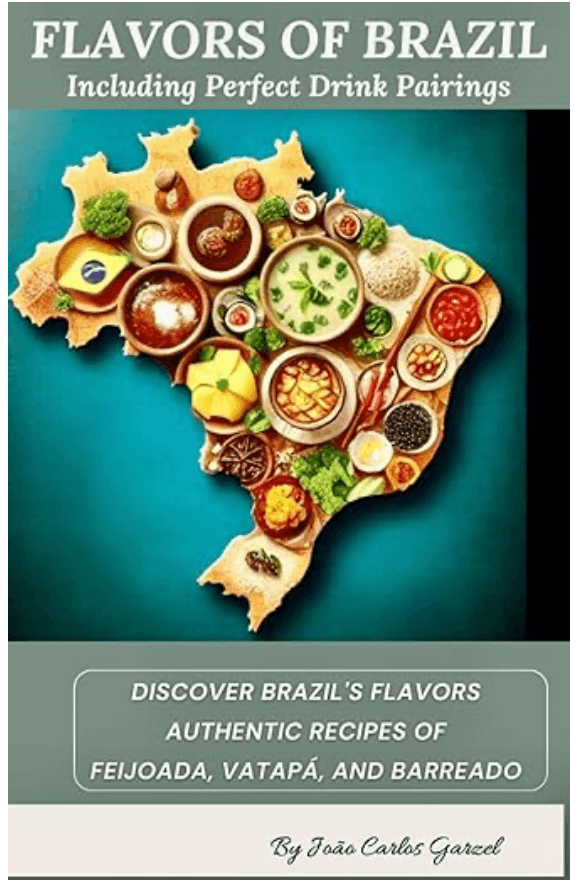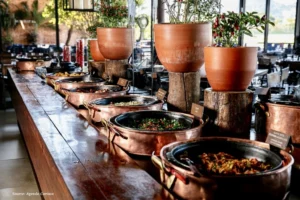A Taste of Brazil’s Rich Culinary Heritage 🌎🍽️
Brazilian cuisine is a feast ,blending diverse regional flavors and cultural influences for the senses, offering a variety of iconic Brazilian dishes that showcase the country’s rich culinary heritage.
With each dish, you experience a unique story of tradition, taste, and passion. In this post, we will explore five iconic Brazilian dishes, highlighting their regional origins and significance. By understanding these dishes, you will gain deeper insight into Brazil’s rich culinary landscape.
🥘 Feijoada (Brazilian Black Bean Stew)
Brazil’s Ultimate Comfort Food (Southeast Region)
✅ Feijoada is one of the most iconic Brazilian dishes, cherished across the country for its deep flavors and hearty ingredients. Traditionally, this black bean stew includes various pork cuts and sausages, creating a rich and satisfying meal.
Rooted in Portuguese cuisine, Feijoada has evolved into a uniquely Brazilian masterpiece. As a result, many restaurants serve it specifically on Wednesdays and Saturdays.
Moreover, it is traditionally accompanied by rice, collard greens, orange slices, and farofa (toasted cassava flour), making it a complete and balanced dish. Consequently, it has become a staple in Brazilian homes and restaurants alike.
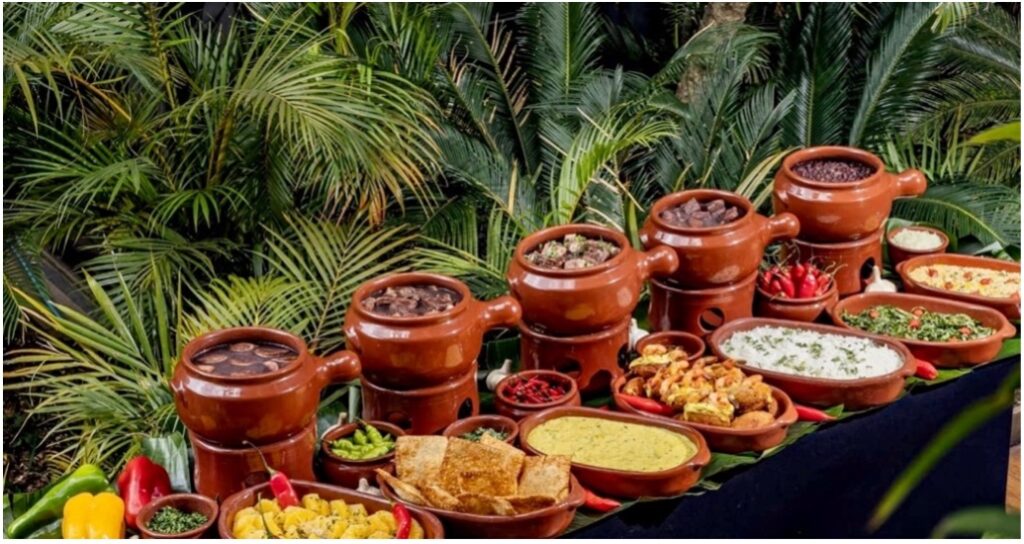
🎥 Feijoada (Brazilian Black Bean Stew)
Discover how to make Brazil’s most beloved black bean stew with this step-by-step recipe!
🌊 Vatapá (Brazilian Shrimp and Peanut Stew)
A Creamy Northeastern Delight (Northeast Region)
✅ Vatapá is a flavorful and creamy dish that originates from Bahia. Made by blending bread, shrimp, peanuts, coconut milk, and dendê (palm oil), it results in a rich and velvety texture.
Typically, this dish is served alongside Acarajé, a deep-fried black-eyed pea fritter. Because of its popularity, it remains a beloved street food in Salvador.
In addition, dendê oil is a key ingredient in many other traditional Northeastern dishes, further enriching the region’s cuisine. Therefore, anyone exploring Bahian food should definitely try Vatapá.
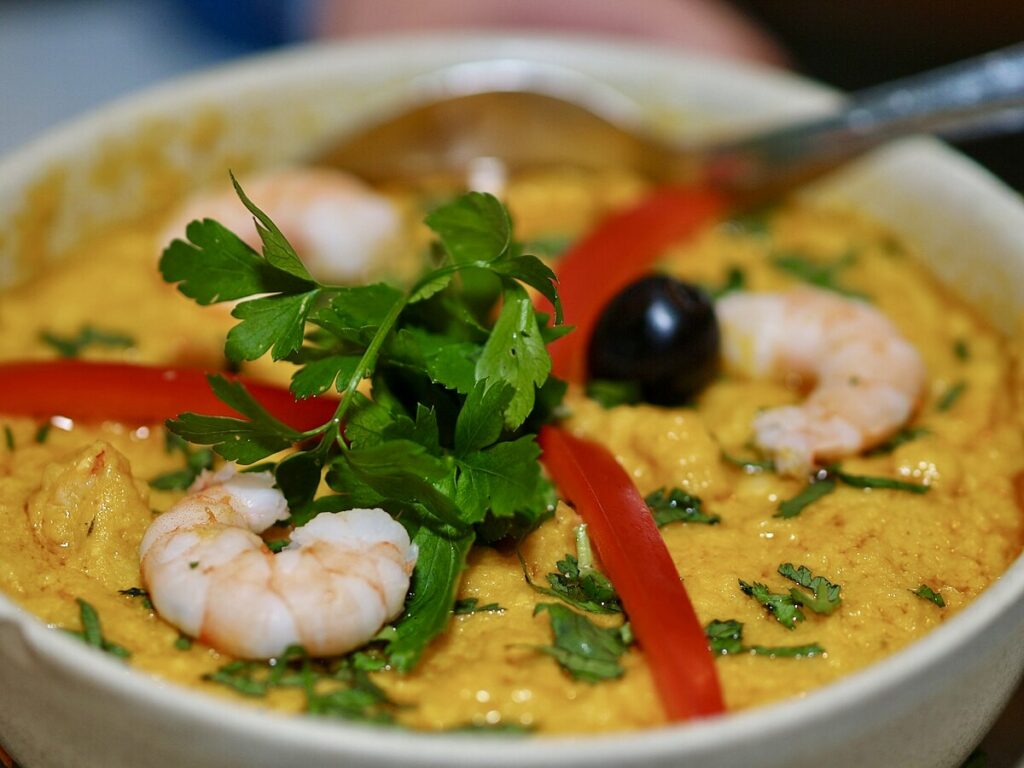
🎥 Vatapá (Brazilian Shrimp and Peanut Stew)
Dive into the rich flavors of Bahia with this traditional Vatapá and Acarajé street food experience!
🔥 Barreado (Slow-Cooked Beef Stew)
A Paranaense Specialty (South Region)
✅ Barreado, a treasured dish from Paraná, represents the essence of slow-cooked Brazilian cuisine. Due to its long preparation time, the beef stew simmers for hours with spices until it reaches an incredibly tender texture.
Traditionally, it is served with rice, banana slices, and cassava flour. This unique combination of sweet and savory flavors makes it a favorite in Southern Brazil.
Notably, Barreado is often enjoyed during festive gatherings, reinforcing its cultural significance. Moreover, its slow-cooking method ensures that the flavors fully develop, creating an unforgettable dining experience.

🎥
Brazilian Barreado: The Best Slow Cooked Meat You’ve Ever Tasted
Uncover the secrets of Paraná’s slow-cooked Barreado, a dish that melts in your mouth!
🌿 Tacacá (Amazonian Shrimp Soup)
A Bold Amazonian Delight (North Region)
✅ Tacacá is a true symbol of the Northern region, offering bold and exotic flavors. Made with tucupi (a yellow broth derived from cassava), jambu leaves, and dried shrimp, this dish provides a one-of-a-kind culinary experience.
One of its most intriguing aspects is the tingling sensation caused by jambu leaves, which adds an adventurous twist. Consequently, food lovers seeking something unique will certainly enjoy this Amazonian specialty.
If you ever visit the North of Brazil, tasting Tacacá should definitely be on your list. Furthermore, it is commonly sold in street markets, allowing visitors to experience it in an authentic setting.

Taste the bold flavors of the Amazon with Tacacá, a unique soup made with tucupi and jambu!
🥭 Arroz com Pequi (Rice with Pequi Fruit)
The Cerrado’s Signature Dish (Central-West Region)
✅ Arroz com Pequi is a well-known dish from the Central-West region, prized for its strong aroma and distinctive taste. It features pequi, a fruit native to the Brazilian Cerrado, which adds a bold flavor to the rice.
Because of its intense fragrance, it is a dish that people either love or find challenging to appreciate. Nonetheless, locals consider it a true delicacy.
Moreover, this dish is often paired with chicken, enhancing its richness. If you want to explore authentic Brazilian flavors, Arroz com Pequi is an excellent choice. Additionally, its unique taste makes it a must-try for those seeking a deeper understanding of Brazilian gastronomy.

🎥 Arroz com Pequi: Brazilian Rice & Exotic Fruit Dish
Experience the unique taste of Brazil’s Cerrado with this fragrant and flavorful Arroz com Pequi recipe!
🌡️ Brazil’s Culinary Climates ☀️🌎
| Region | Average Temperature (°C) | Average Temperature (°F) |
|---|---|---|
| North | 25 – 30°C | 77 – 86°F |
| Northeast | 24 – 29°C | 75 – 84°F |
| Central-West | 22 – 28°C | 72 – 82°F |
| Southeast | 18 – 26°C | 64 – 79°F |
| South | 12 – 22°C | 54 – 72°F |
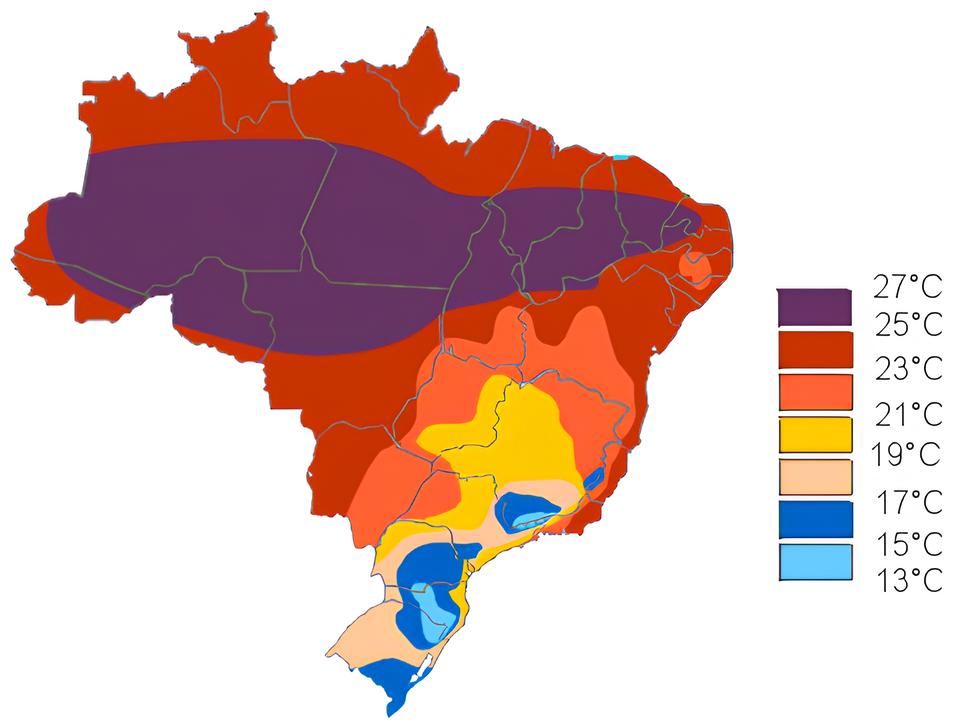
Discover More About Brazilian Cuisine! 🇧🇷
Brazilian food blends cultures, flavors, and textures, offering something for every palate.
Whether you are savoring Feijoada in Rio or tasting Tacacá in the Amazon, every bite tells a unique story.
Want to learn more? Then check out these videos for an authentic taste of Brazil:
🎥 Feijoada (Brazilian Black Bean Stew)
🎥 Vatapá (Brazilian Shrimp and Peanut Stew)
🎥 Barreado (Slow-Cooked Beef Stew)
🎥 Tacacá (Amazonian Shrimp Soup)
🎥 Arroz com Pequi (Rice with Pequi Fruit)
These five iconic Brazilian dishes showcase the country’s rich culinary diversity.
Which dish are you excited to try first?
Explore the rich and diverse flavors of Brazil through my books, which are now available on Amazon!
Whether you’re a seasoned cook or just starting your culinary journey, these books not only provide authentic Brazilian recipes but also offer insights into the country’s food culture.
From the iconic feijoada to regional specialties, you’ll find everything you need to bring the taste of Brazil into your kitchen.
To learn more, check out my books and discover the flavors of Brazil by visiting Flavors of Brazil.

